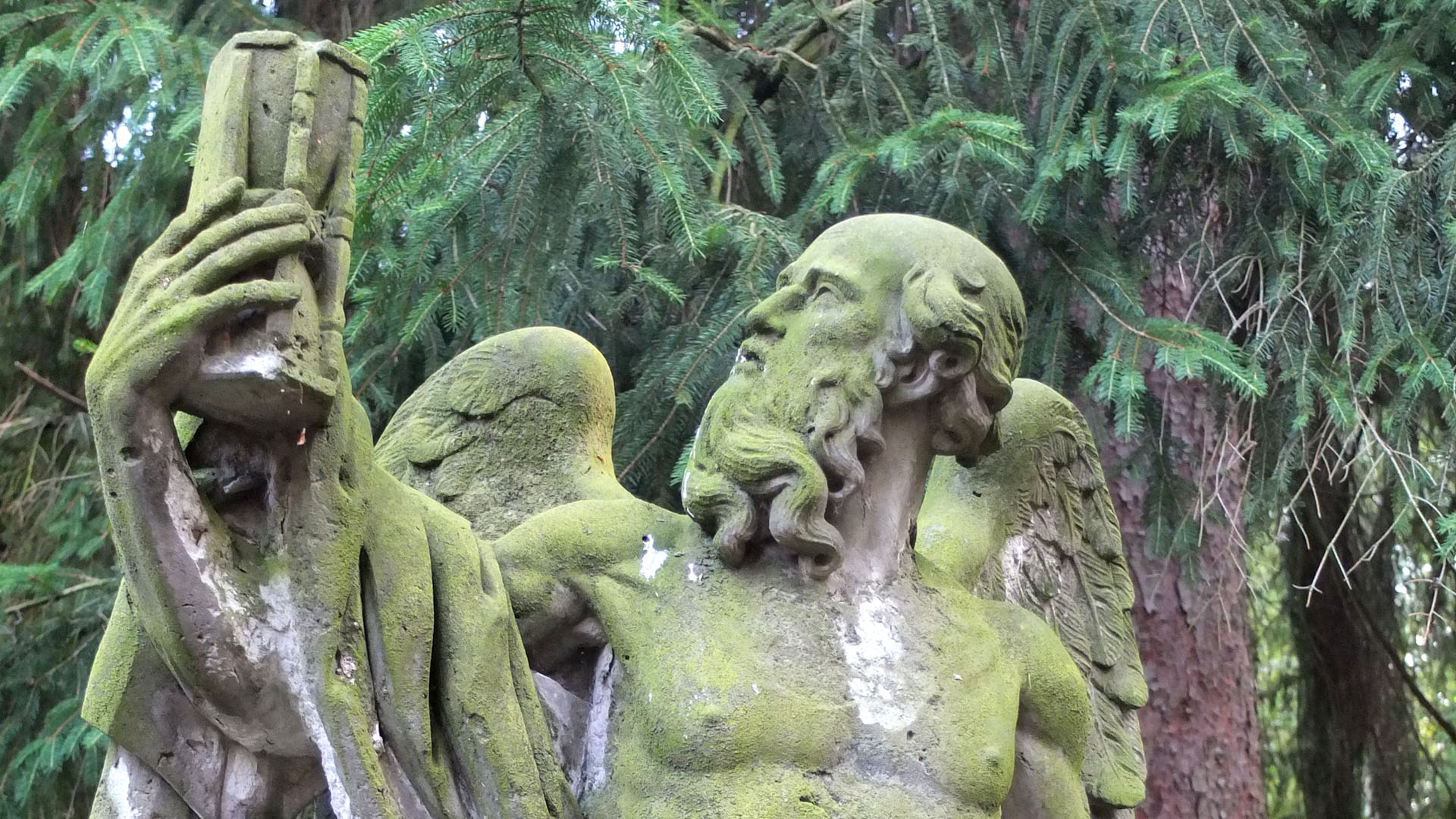
Tempus fugit – time flies. When artists put their concept of time into the picture in allegorical representations, they combine familiar symbols of time (such as the hourglass) with others (e.g. with the scythe as a symbol of death). Allegories are representations in which something is said differently than with concepts. Artistic representation translates what is understood conceptually into pictorial language and, to this end, draws on symbols and allegories that many viewers are familiar with.
Allegories assume that the meanings of their parts are understood: for example, the depicted figure of an old bearded man as “Chronos”, embodying time in Greek mythology. When this figure is given wings in an allegorical representation, it is thus brought close to the angels. The result is a peculiar hybrid figure, an angel of time. But why is an angelic figure chosen for representation – and not a skeleton with a scythe? Those who know the Bible will perhaps find a reference to the time of the Apocalypse. They will remember the parable of the angels as “reapers” in Matthew 13, who end an old time to make a new time possible: It must be harvested in order to gain new seed.
Allegories are not merely figurations of a meaning. Every allegory invites us to read “between the lines” – that is, not only to look at what is said with the individual allegories. It also invites us to look at the way they are put together and how constellations of objects and persons, wings and hands, hourglass and scythe are reconfigured in each artistically particular way. The pictorial representation allows us to read something out of the facial features just as we can read something into the folds of the garments. It invites an understanding that goes beyond the edification of the symbolic.
In all art epochs, it is the style of depiction that points the viewer to something more behind the meaning and to something missing in what is depicted. The Chronos of the sculptor Ignaz Günther lends the allegory of time the dancing lightness of his rococo angels – for they point to something rather than at something. Adolph Menzel, who was esteemed as a “realist”, contemplates his own lifetime in several versions of his personal chronos in profound dialogue with a young, angelic, seemingly timeless genius. A cemetery angel seems to want to drink a sip of sand from the chalice of time in the next moment. Or has he just enjoyed such a moment of time – and is now pondering whether – as Nelly Sachs says in her poem “Glowing Riddles II” – the sand in his mouth tastes of resurrection?
By revealing the gestural hidden within it, an allegory can lead us to the trace of what it lacks: the movement of time, which is not exhausted in the image of trickling away. For if we succeed in bringing the still gesture to life through contemplation, then perhaps the message that the allegory conceals becomes visible – the message that angels write with their wings in the air and with their feet in the sands of time when they dance.
rk